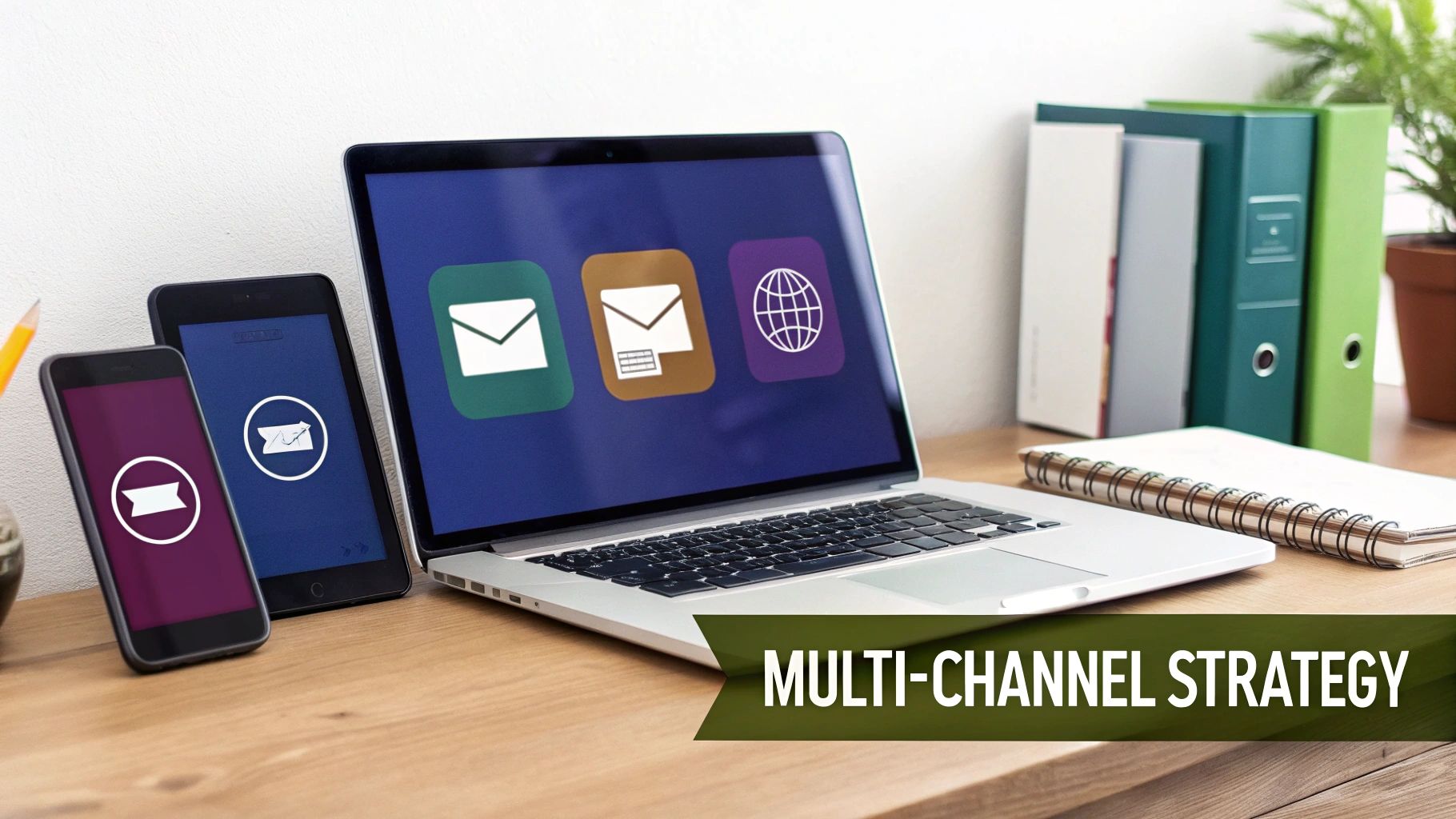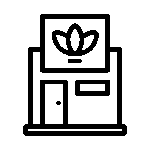Top Client Communication Best Practices for Beauty Experts

In the beauty industry, your technical skills bring clients through the door, but it's exceptional communication that keeps them coming back. Strong, lasting relationships are the foundation of any thriving salon, spa, or freelance practice. Yet, navigating client interactions, from the initial booking to the final follow-up, can be intricate. Misunderstandings, unmet expectations, and missed opportunities can quickly hinder growth and damage your reputation.
This guide moves beyond generic advice to provide a clear roadmap of actionable client communication best practices specifically tailored for beauty professionals. We will break down seven distinct, easy-to-implement strategies designed to help you build profound trust, foster unwavering loyalty, and create an unparalleled client experience.
Each point is designed to be immediately useful, offering practical steps you can take today. Mastering these techniques will transform every conversation, from a simple "hello" to a heartfelt "see you soon," into a powerful tool for your business's success. By refining how you connect, you can turn first-time visitors into lifelong advocates. Let's explore how to make every interaction count.
1. Active Listening and Empathetic Response
Effective client communication begins not with what you say, but with how well you listen. Active listening is a foundational skill that transforms a simple client exchange into a meaningful connection. It involves fully concentrating on what the client is saying, understanding their message beyond the words, and responding in a way that confirms your comprehension and empathy. For beauty professionals, this is the difference between a one-time service and a long-term, loyal client relationship.
This approach, popularized by figures like Carl Rogers and Stephen Covey, is about more than just hearing; it's about understanding the emotions, goals, and even anxieties behind a client's request. Think of an Apple Genius Bar representative who doesn't just fix a problem but listens to the user's frustration, or a therapist using reflective techniques to validate a patient's feelings. This is one of the most powerful client communication best practices you can adopt.

How to Implement Active Listening
Implementing this technique requires intentional effort and practice. The goal is to make your client feel genuinely heard and valued, which directly impacts their satisfaction and trust in your skills.
Actionable Steps:
- Paraphrase and Summarize: Before you begin, repeat what you've heard to confirm you understand. A simple script like, "Okay, just to confirm, you're looking for a low-maintenance color that will blend naturally as it grows out. Is that right?" This prevents rework and shows the client you are aligned.
- Acknowledge Their Feelings: If a client seems nervous, address it directly with empathy. Say, "I understand a big chop can feel a little nerve-wracking. Let's look at a few more inspiration photos together to make sure you're 100% confident before we start." This builds immediate trust.
- Create a Distraction-Free Zone: Give the client your full attention during consultations. Turn your phone face down and step away from the front desk. This simple action signals that they are your only priority at that moment, making them feel respected and important.
By mastering active listening, you create an environment of trust and collaboration. This not only ensures better service outcomes but is also a cornerstone of building lasting client relationships. When clients feel truly understood, they are far more likely to return and recommend your services. Learn more about how these practices build strong bonds and learn how to build client loyalty on gohappybeauty.com.
2. Proactive and Transparent Communication
Beyond simply reacting to client inquiries, a superior communication strategy involves proactively keeping them in the loop. This means regularly updating clients on their service journey, potential schedule changes, or relevant policy updates before they even think to ask. This approach prioritizes transparency and honesty, building a deep well of trust by eliminating surprises and managing expectations from the very beginning. For a beauty business, this could be the difference between a client feeling anxious about an appointment and feeling completely cared for.
This philosophy of radical transparency has been championed by companies like Basecamp, known for its transparent project management tools, and Patagonia, which is open about its business and supply chain practices. It is a powerful client communication best practice that demonstrates respect for your client's time and peace of mind. By anticipating their questions and providing information upfront, you position your brand as reliable, professional, and client-centric.

How to Implement Proactive Communication
Putting this into practice requires creating systems that make sharing information a natural part of your workflow. The goal is to make clients feel informed and confident in your process, which solidifies their loyalty.
Actionable Steps:
- Establish a Communication Cadence: Let clients know what to expect. At booking, tell them, "You can expect an automated reminder 48 hours before your appointment, and I'll personally text you the day before with any prep reminders." This simple script creates a predictable and professional experience.
- Share Both Good and Bad News Quickly: If you're running late, text the client as soon as you know. A quick message like, "Hi [Client Name], just a heads up, I'm running about 15 minutes behind schedule. I am so sorry for the delay and really appreciate your patience!" is far better than a stressful, last-minute apology when they arrive.
- Use Templates for Consistency: Create pre-written messages for common situations like appointment confirmations, aftercare instructions, or policy updates. This saves time and ensures every client gets the same clear, professional communication. For instance, have a standard "Lash Extension Aftercare" email ready to send the moment their service is complete.
By adopting a proactive and transparent communication style, you take control of the narrative and build unshakable client trust. This practice not only minimizes misunderstandings and client anxiety but also reinforces your reputation as a thoughtful and professional service provider.
3. Multi-Channel Communication Strategy
In today's connected world, clients expect to communicate on their own terms, using the platforms they prefer. A multi-channel communication strategy meets this expectation by leveraging various channels like email, SMS, social media, and phone calls to ensure your messages are both seen and valued. This integrated approach acknowledges that a one-size-fits-all communication method is no longer effective for building strong client relationships.
This concept was popularized by omnichannel retail leaders like Starbucks and CRM platforms such as HubSpot, which demonstrate how seamless interaction across multiple touchpoints enhances customer experience. For a beauty business, this means a client might book online, receive an SMS reminder, see your work on Instagram, and get a post-service follow-up via email. This is one of the most essential client communication best practices for modern businesses. To truly master your effective multi-channel communication strategy, it's important to consider how all your outreach efforts, from email to social media, work in concert.

How to Implement a Multi-Channel Strategy
Adopting this strategy requires understanding your clients' preferences and using each channel for its intended purpose. The goal is to create a convenient and consistent experience that makes every client feel catered to.
Actionable Steps:
- Identify Client Preferences: Add a simple question to your new client intake form: "What is your preferred method of communication for reminders and updates (e.g., Email, SMS)?" Record this choice in your client notes to ensure you always use their favorite channel.
- Use Channels Purposefully: Assign a job to each channel. Use SMS for urgent updates like "I'm running 10 minutes late." Use email for longer, less-urgent information like newsletters, promotions, or detailed aftercare instructions. Use social media DMs for initial inquiries and community engagement.
- Maintain Brand Consistency: Your tone should be consistent everywhere. Whether a client gets an email, a text, or a DM, the voice should feel like it’s coming from the same professional, friendly brand. Use the same logo, colors, and tone across all platforms.
By meeting clients on their preferred channels, you reduce communication friction and show respect for their time and preferences. This thoughtful approach not only improves message deliverability but also significantly strengthens client trust and satisfaction.
4. Clear Expectation Setting and Boundary Management
Misunderstandings are a primary source of client dissatisfaction, often stemming from a simple misalignment of expectations. Clear expectation setting is the proactive practice of defining and agreeing upon all aspects of your service, from the final look to your professional boundaries. It involves creating a shared understanding of outcomes, timelines, costs, and communication protocols right from the start. For beauty professionals, this prevents scope creep, minimizes conflicts, and builds a foundation of professional respect.
This systematic approach is a hallmark of professional service industries, where consultants use detailed statements of work and law firms use retainer agreements to ensure clarity. Experts like business coach Dan Sullivan emphasize that setting the "rules of the game" upfront allows for a smoother, more productive relationship. Adopting this practice is one of the most effective client communication best practices for safeguarding your time and ensuring client happiness.
How to Implement Expectation Setting
Implementing this strategy requires a shift from assumption to articulation. The goal is to leave no room for ambiguity, ensuring both you and your client are fully aligned before any service begins. This transparency builds trust and positions you as a true professional.
Actionable Steps:
- Document Everything in Writing: Formalize your key policies on your website and booking page. Clearly list your pricing, cancellation policy, and touch-up rules. For complex services like color corrections, use a simple consent form that outlines the plan and cost before you start.
- Verbally Reinforce Key Boundaries: During the consultation, state your most important policies out loud. For example: "Just to be clear, our price includes one touch-up within the first week. Any adjustments after that will be booked as a new appointment." This verbal confirmation prevents future "I didn't know" moments.
- Establish Communication Protocols: Set clear office hours for communication. Add a line to your booking confirmation email and social media bio, such as: "For all inquiries, please text us. We respond to all messages between 9 AM and 5 PM, Tuesday–Saturday." This prevents late-night texts and manages client expectations.
By proactively managing expectations, you prevent potential conflicts and create a more predictable, stress-free experience for everyone involved. A critical part of this is establishing clear rules for no-shows and late cancellations. Explore how to create effective policies and learn how to create and enforce salon cancellation policies on gohappybeauty.com.
5. Personalized Communication Approach
A one-size-fits-all communication strategy simply doesn’t work in a client-centric industry like beauty. A personalized communication approach means tailoring your messaging style, frequency, and channel to fit each client's unique personality and preferences. It acknowledges that the tech-savvy millennial who prefers booking via text is different from the older client who values a confirmation phone call. This level of customization is a hallmark of premium service.
This concept is famously practiced by luxury service leaders like The Ritz-Carlton, where staff are trained to observe and remember guest preferences to create a deeply personal experience. Similarly, high-end real estate agents don't send generic newsletters; they send curated listings based on a client's specific feedback and lifestyle. Adopting this personalized strategy is one of the most impactful client communication best practices for creating an exclusive, high-touch experience that commands loyalty.
How to Implement a Personalized Approach
Implementing personalization requires you to move beyond basic client data and understand their communication habits. The goal is to make every interaction feel like it was crafted specifically for them, strengthening their connection to your brand.
Actionable Steps:
- Create Communication Profiles: During the initial consultation, make quick notes about their communication style and preferences. Ask directly, "Is text or email better for you for appointment reminders?" Log these details in your client management system or booking app.
- Mirror Their Communication Style: Pay attention to how your clients contact you. If a client sends short, direct texts, reply in a similar way. If another sends long, detailed emails, give them a thoughtful and comprehensive response. This subconscious mirroring builds rapport and comfort.
- Segment Your Client Base: Use tags or categories in your booking software to group clients. Create a "VIP" list for clients who pre-book regularly and give them first access to your schedule. Make a "New Client" list to send a special check-in message one week after their first visit. This makes your communication feel relevant and exclusive.
By personalizing your communication, you show clients that you see them as individuals, not just as appointments in your calendar. This deepens trust, increases satisfaction, and transforms a standard service into a bespoke experience they will value and seek out again.
6. Documentation and Follow-up Systems
Great service doesn't end when the client leaves your chair; it extends into a well-organized system of record-keeping and follow-up. Implementing a robust documentation and follow-up process ensures that no detail is forgotten and every client feels remembered and valued. This practice involves systematically recording client preferences, service history, and key conversation points, then using that information to create a seamless, personalized experience on their next visit. For busy beauty professionals, this is a game-changer for maintaining consistency and quality across a growing clientele.
This approach is the backbone of modern customer relationship management (CRM), popularized by platforms like Salesforce and HubSpot. It transforms client interactions from isolated events into an ongoing, documented relationship. Think of how a healthcare provider uses electronic health records to track a patient's history for better care, or how top-tier project management tools track every decision. Adopting this systematic approach is one of the most impactful client communication best practices for elevating professionalism and client retention.
How to Implement Documentation and Follow-up Systems
Creating this system doesn't have to be complicated. The goal is to build a reliable record of each client's journey with your business, which helps you anticipate their needs and personalize future interactions.
Actionable Steps:
- Standardize Your Note-Taking: Create a simple template to use for every client note in your booking software. Include fields for: Service History, Formulas/Products Used, Personal Notes (e.g., job, upcoming vacation, coffee preference), and Next Appointment Goal. This ensures consistency.
- Leverage Your Booking Software: Immediately after each appointment, take two minutes to update the client's profile in your booking app. Note down any important details from your conversation. Did they mention a wedding in six months? Make a note to ask about it next time. This simple act creates a powerful personal connection.
- Set Automated Follow-up Reminders: Use your calendar or phone to set reminders for client follow-ups. For example, set a reminder for one week after a big color change to send a text asking, "Hi [Client Name]! Just wanted to check in and see how you're loving your new hair." This shows you care beyond the appointment.
By diligently documenting client information, you create a valuable database that ensures continuity of care, even if a client sees a different stylist in your salon. This level of organization demonstrates a commitment to excellence and is key to building a loyal following. Many of these practices can be streamlined with the right tools; you can discover how online booking platforms for hairdressers can support your documentation efforts.
7. Solution-Oriented Problem Communication
When challenges arise, how you communicate them can either build or break client trust. Solution-oriented problem communication is an advanced technique that involves presenting issues alongside potential solutions, turning a negative situation into a positive, collaborative experience. Instead of simply reporting a problem, you position yourself as a proactive partner dedicated to finding the best path forward. This approach elevates your professionalism and reinforces your value beyond the service itself.
This method, heavily influenced by management consulting and design thinking, shifts the dynamic from problem-identifier to problem-solver. Think of a financial advisor who doesn't just report market downturns but presents portfolio adjustments to mitigate risk, or a skilled tattoo artist who, upon realizing a client's chosen placement has scar tissue, immediately suggests design modifications to ensure a beautiful outcome. Adopting this strategy is one of the most impactful client communication best practices for navigating unexpected hurdles.
How to Implement Solution-Oriented Communication
Implementing this approach requires a shift in mindset from reaction to resolution. The goal is to empower the client with choices and a clear plan, transforming potential frustration into a moment of strengthened partnership.
Actionable Steps:
- Frame the Issue with Solutions: Never state a problem without offering a solution. Instead of saying, "Your hair is too damaged for this," try: "To get you to your goal color safely, we have two great options. We can do it over two sessions to protect your hair's health, or we could do this beautiful alternative shade today that will look amazing and keep your hair strong."
- Present Clear Options and Implications: Give the client at least two good choices and explain the outcome of each. If a scheduling conflict occurs on your end, say: "I have an unexpected opening at 3 PM today, or I can book you as my first appointment tomorrow with a complimentary deep conditioning treatment for the inconvenience. Which works better for you?" This empowers the client.
- Involve the Client in the Decision: After presenting the options, ask for their feedback to make it a collaborative choice. Use phrases like, "What are your thoughts on those options?" or "Which path feels right to you?" This ensures the client feels in control and confident in the new plan, reinforcing their trust in your expertise.
By mastering solution-oriented communication, you demonstrate that you are not just a service provider but a strategic partner invested in your client's satisfaction. This method protects your professional reputation and turns difficult conversations into opportunities to showcase your problem-solving skills and commitment.
7 Best Practices Comparison Guide
| Communication Approach | Implementation Complexity 🔄 | Resource Requirements ⚡ | Expected Outcomes 📊 | Ideal Use Cases 💡 | Key Advantages ⭐ |
|---|---|---|---|---|---|
| Active Listening and Empathetic Response | Medium – requires training and emotional skill | High – time-intensive per interaction | Strong client trust; reduced misunderstandings | High-touch client services, therapy, consulting | Builds rapport and uncovers hidden client needs |
| Proactive and Transparent Communication | Medium – needs regular, structured updates | Medium to High – ongoing communication efforts | Increased trust; fewer crisis moments | Project management, client relationship management | Prevents surprises; builds strategic partnerships |
| Multi-Channel Communication Strategy | High – complex integration and consistency | High – managing and monitoring multiple channels | Better message reach and client accommodation | Diverse client bases with varied communication preferences | Ensures message delivery; improves accessibility |
| Clear Expectation Setting and Boundary Management | Medium – upfront documentation and reinforcement | Medium – time for agreements and reviews | Reduced scope creep; clear professional boundaries | Legal, consulting, freelancing, therapeutic services | Prevents conflicts; maintains professionalism |
| Personalized Communication Approach | High – requires deep client understanding | High – time and sophisticated CRM systems | Higher satisfaction and engagement | Luxury services, executive coaching, bespoke client interactions | Enhances client loyalty via tailored experiences |
| Documentation and Follow-up Systems | Medium – requires standardized processes | Medium to High – documentation and tracking tools | Improved accountability; continuity and protection | Service firms, healthcare, project teams | Prevents lost details; supports data-driven management |
| Solution-Oriented Problem Communication | Medium to High – preparation of solutions needed | Medium – analysis and communication preparation | Faster resolutions; stronger client confidence | Consulting, IT support, financial advising, project management | Positions provider as strategic partner |
Elevate Your Business One Conversation at a Time
Mastering client communication isn't a final destination; it's a continuous practice that fuels the heart of your beauty business. Throughout this article, we've explored seven essential pillars that transform simple interactions into powerful connections, fostering loyalty, generating referrals, and solidifying your brand’s reputation. From the foundational skill of active listening to the strategic implementation of a multi-channel communication strategy, each practice offers a direct path to a more professional and empathetic client experience.
The journey to exceptional service is built on consistency. Implementing these client communication best practices means creating a reliable, positive environment for every person who walks through your door or interacts with you online. It’s about setting clear expectations to build trust, personalizing your approach to make clients feel uniquely valued, and handling challenges with a solution-oriented mindset that turns potential problems into loyalty-building opportunities. These aren't just abstract ideas; they are actionable strategies that, when combined, create an unbreakable bond between you and your clientele.
Your Actionable Next Steps
The key to progress is to avoid overwhelm. Instead of trying to implement all seven strategies at once, focus on incremental improvement.
- This Week: Choose one or two practices that address your most immediate challenges. Is miscommunication about appointment details a frequent issue? Focus on implementing a robust documentation and follow-up system. Do you feel your consultations could be more effective? Double down on active listening and empathetic responses.
- This Month: Review your progress and select another practice to integrate. As you become more comfortable, these skills will begin to overlap and reinforce one another, creating a seamless communication framework.
- Ongoing: Regularly revisit these principles. As your business grows and your client base evolves, your communication strategies will need to adapt.
To further elevate your business through enhanced client interactions, a comprehensive effective business communication guide can provide a strong foundation. Ultimately, investing time and effort into how you connect with your clients is a direct investment in the sustainable, long-term growth of your business. Each conversation is a chance to reinforce your value and prove that you are the best choice for their beauty needs.
Ready to build a professional online hub that supports your communication goals? The gohappybeauty platform provides you with a stunning, easy-to-manage website that centralizes your booking, showcases your policies, and presents your brand with elegance. Streamline your client interactions and create a seamless digital experience with a dedicated website from gohappybeauty.
Grow your beauty business
Our focus is, and always will be, helping you improve your online presence and generate more business from your website. That is what we do, for you.

